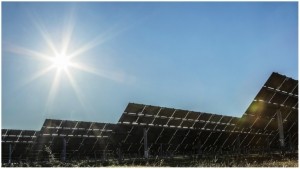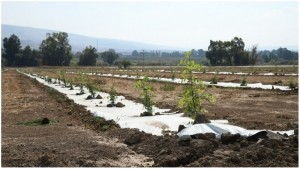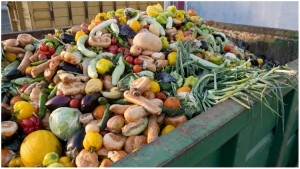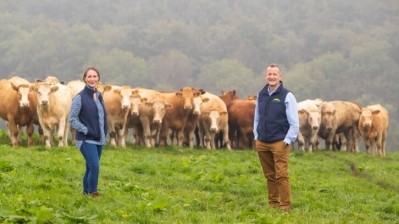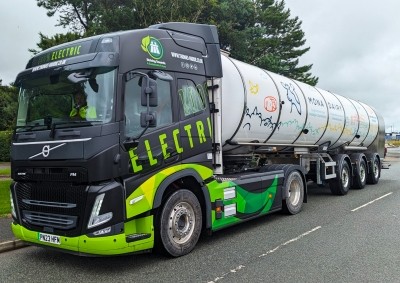Long read
We need to be climate literate

Don’t look up: A brief history of climate change
The scientific community have been rallying together to warn society about the effects of climate change well before the job roles of ‘net zero officer’ and ‘ESG lead’ were conventional titles. It was 1965 when scientists on the US President’s Science Advisory Committee first aired concerns of the ‘greenhouse effect’. Ten years later, the term ‘global warming’ was coined, but it wasn’t really acknowledged until quite some time after.
Meanwhile, as climate change fell on deaf ears, the damage continued. By the 1980s, freak weather events were making the press. Fast forward eight years and the Intergovernmental Panel on Climate Change (IPCC) was formed, yet the matter of climate change still wasn’t ‘mainstream’.
In 2015, a 15-year-old girl skipped school, protesting outside of Swedish Parliament, brandishing a sign that read 'Skolstrejk för klimatet' (translation: Schools strike for climate). Greta Thunberg’s name would become familiar across the world, as she inspired a generation to speak up.
The same year, 200 parties signed up to the legally binding international treaty known as the ‘Paris Agreement’, which came into effect in November 2016 with the aim to limit global warming to below 2°C.
In 2019, the Committee on Climate Change (CCC) cautioned that the UK would not achieve the targets set by the Paris Agreement unless further action was taken. Soon after, the UK became the first major economy to pass a Net Zero emissions law.
The target requires the UK to bring all greenhouse gas emissions to Net Zero by 2050, compared with the previous target of at least an 80% reduction from 1990 levels.
Net Zero essentially means that the levels of greenhouse gases produced and the amount removed from the atmosphere are balanced, i.e. the amount we add is no more than what we take away.
Are we on track to hit Net Zero?
Today, the words ‘Net Zero’ are everywhere, yet the CCC states that current plans are unlikely to help us hit that 2050 target.
During the height of the pandemic, we saw emissions dip – naturally because of lockdowns. In 2021, emissions started to climb back up, rising by 4% (from 2020). However, 2021 emissions remained lower (-10%) than pre-pandemic levels, and considerably less than 1990 levels (-47%)
Speaking to Emma Piercy, FDF’s head of climate change and policy, on the food system’s influence, she explained that worldwide it “constitutes 26% of greenhouse gas emissions” and therefore it has a “significant impact on the environment and global warming”.
She added: “As DEFRA stated in its 2021 Food Security report, the biggest medium to long term risk to the UK's domestic food production comes from climate change and other environmental pressures, reinforcing the imperative to address both the causes and consequences of climate change and to reduce emissions to Net Zero.”
In 2018, the UK government asked Henry Dimbleby to carry out a review of the food system. The independent assessment laid out suggestions which its author believed would pave the way towards a safer, healthier, more affordable food system that also took into consideration environmental impact.
Unfortunately, not everyone has been happy with the Government’s Food Strategy which followed, with even Dimbleby himself saying it’s “not a strategy” and “doesn’t set out a clear vision as to why we have the problems we have now and what needs to be done”.
A recent CCC assessment of the Government’s progress in reducing emissions in line with the UK’s climate targets also stated that although we have made progress, there are policy gaps and a greater emphasis is needed on delivery. And, according to its report, just 39% of the required emissions savings are backed up by credible plans.
One of the gaps flagged by the CCC is that it “does not include significant ambition to reduce consumer demand for high-carbon activities (e.g. through healthier diets).”
Dimbleby also expressed dismay over the absence of diet-related plans in the overall strategy. “There was nothing really there on health,” he told The Guardian last June.
Interestingly, at our most recent Business Leaders Forum, the discussion of health and sustainability and how they have become synonymous was raised, with a delegate expressing the need for them to become separated again. “The S-word is getting in the way of the H-word,” they stated.
Responding to them, another attendee said they appreciated the viewpoint, but were unsure the two could become untangled: “I think we will have to live with that complexity and how they can work together. We might need to explain to people that these things have to exist together because we can’t focus on one without the other.”
Net Zero strategies in action
The good news is that a lot of strides are being made by the food and drink sector.
Arla, for example, launched its Climate Action Roadmap last year, which focused on carbon Net Zero dairy.
“Arla’s scope 1 and 2 emissions reduction target is consistent with changes needed to keep global warming to 1.5°C,” said Ben Wood, sustainability manager at Arla Foods. “These are among the first dairy industry climate targets to be verified by the Science Based Targets initiative (SBTi) and require Arla to reduce scope one and two emissions by 63%, against a 2015 baseline.”
According to Wood, although Arla farmers are some of the most “climate-efficient in the world, producing milk with around half the emissions of the global average”, the company’s scope 3 targets – covering the farmers’ own greenhouse gas emissions – are looking to reduce emissions by 30% per kg of standardised raw milk and whey by 2030.
The roadmap also examines emissions throughout production, transport and logistics, and packaging.
Wood offered an example: “We will be switching to 100% renewable electricity across production sites by 2025, which will contribute 58% of the emissions reductions we need to make in production by 2030. Additionally, 100% recyclable packaging will be used across branded products by 2025 and will be helping our farmers to adapt more sustainable feed production practices.”
Arla’s sustainability model also includes a climate check report system, which each farmer is invited to complete and sees them meeting with an independent advisory who flags where they are producing emissions.
Arla is also incentivising its farmers to hit targets via a system which helps funds their sustainability actions.
“From 2023, the milk price that individual Arla farmers receive will depend on action that they take to enhance environmental sustainability. The point-based Sustainability Incentive model builds on data from the Climate Check, to reward current and future sustainability activities on farm.
“Eighty points will be available from the start of 2023 and a further 20 points for new levers are expected to be built into the model within a few years, leading to a total of 100 points. For each point that the farmers are able to achieve, they will receive 0.03 eurocent per kilo of milk.”
Meanwhile, food and agri-tech start-up CarobWay is taking a different approach to Net Zero and focusing on bringing the “ancient crop” carob mainstream.
“Carob trees can grow on non-arable land including deserts where no other crops could grow and naturally have high carbon storage capabilities making them very sustainable to cultivate,” a spokesperson from CarobWay told Food Manufacture.
“CarobWay applies smart technology to grow select trees endemic to Israel that harbour a superior nutritional profile, quickly and with increased yields. The start-up achieves this by applying automated fertilisation and irrigation systems to optimise water usage and growth using minimal equipment and very little labour.”
CarobWay has already planted 70,000 trees and as part of its Net Zero strategy intends to have 500,000 carob trees in its repertoire over the next four years.
“The food products created from them will rely on very little energy derived from the sun using solar technology.”
Solabia – Algatech Nutrition is using similar tactics to reduce emissions, which involves growing microalgae in infertile land in the desert.
The facility is located in Israel's Arava desert and takes advantage of the desert’s year-round sunlight. This helps avoids the traditionally energy-intensive process that comes with microalgae. Once again, the company’s electricity is reduced by using solar energy from a nearby solar farm, alongside LED lights for its inoculum maintenance.
“Microalgae is an efficient and sustainable crop choice, as it grows quickly, utilises light energy efficiently, captures atmospheric CO2 [carbon dixoide], and produces more food per hectare than conventional crops,” the company told Food Manufacture.
“We utilise closed system photobioreactors made of glass tubes that optimise sunlight exposure while conserving water. Additionally, we use recycled water to regulate temperature and minimise our ecological impact. The only water that is used for microalgae cultivation is brackish water, locally sourced, which is then desalinated and purified.”
More than just carbon
However, hitting Net Zero is not resolved on solving carbon alone. Although carbon dioxide is more abundant in the atmosphere, a single molecule’s worth of methane is far more dangerous as it can more effectively trap heat. The other greenhouse gas to consider after these two is nitrous oxide (N₂O or laughing gas), which again, has the ability to warm the atmosphere much more intensively than carbon – and unfortunately lingers.
“The fact that food consumed in the UK accounts for 21% of our total carbon footprint, illustrates why stakeholders in the sector across the farm to fork supply chain are taking a leading role in responding to the causes and consequences of climate change,” said Piercy.
It’s worth noting here that this 21% is the total emissions associated with food and drink in the UK which Piercy explains is 158 million tonnes of carbon dioxide equivalent (MTCO2e).
“So you have conversions in order to create a total figure for greenhouse gas emissions that is better understood,” she elaborated.
“Although CO2 equivalents are used to measure emissions, agriculture’s contribution of carbon is relatively low and the majority of its emissions come from methane and nitrous oxide. This makes agriculture somewhat unusual in that non-CO2 gases are the big contributors to emissions,” added Rebecca Geraghty, chief commercial officer at Agri-food data company, Agrimetrics.
“Methane is the dominant source, driven by the digestive processes of livestock, and livestock waste and manures. Agriculture represents 28 MtCO2e (48%) of UK methane emissions.
“Nitrous oxide emissions are driven by the use of agricultural fertilisers on soils, and agriculture represents 13 MtCO2e (69%) of the UKs emissions.”
Ways of lowering emissions – and it starts with data
“Whilst the industry’s commitment to sustainable processes, from farming and factory operations to logistics and beyond is growing, ensuring the integrity and sustainability credentials our premises can be just as vital,” Paul Waldeck, executive director of Ambrey Baker noted.
“We’re seeing a rising trend in ageing or infrequently maintained facilities offering poor energy efficiency, meaning that a manufacturer’s efforts to reduce energy or waste through its operations are compromised by their factories.
“Regular maintenance works and premises assessments can provide simple fixes, such as replacing rusted gaskets or compromised door seals. These works can eradicate excess energy usage, making a manufacturer’s operations more sustainable, and cheaper to run and increase temperature resilience, which is a growing issue.
“The record temperatures we saw last summer typify our changing climate, and the heat gain on factory and cold store roofs was enormous. Many temperature-controlled facilities struggled to maintain operational temperatures, leading to excessive energy expenditure. Winter has delivered extreme colds too, meaning we are seeing the temperature resilience of these premises consistently put under massive scrutiny.”
Food waste was also flagged by Waldeck and Piercy as a key consideration.
“Whilst 70% of post-farm gate waste comes from households, consumers cannot be solely to blame,” Waldeck said. “This is especially important when Wrap research states that total food waste from suppliers has grown 100,000 tonnes since 2018, with nearly two-thirds increasing wastage since.
“Moreover, manufacturers have a duty to inform consumers about best storage practices to ensure longevity. For that, packaging can play a key role. In 2022, an estimated 670,000 tonnes of food were discarded because of misinterpretations of the definition of best-before and sell-by dates.
“Simple, accessible recipes on the packaging, or QR code links to online recipes are two innovative approaches to help inspire consumers to turn their leftovers into nutritious meals, making consumers more resourceful in the process.”
Piercy recommended undertaking redistribution routes for waste, highlighting that when this is not possible, animal feed or fuel can be alternative options.
She also noted the benefit of moving towards solutions such as electric fleets, renewables and integrating climate performance requirements into your procurement process.
However, she stated that although from a manufacturing perspective, companies can take many actions to reduce emissions, the first is to “understand the emissions footprint – you can’t manage what you can’t measure”.
Agrimetrics believes that “commentators tend to focus on actions like widescale tree planting or scaling back production as solutions for agriculture” when it comes to lowering emissions.
“Yet both do little to help from a food industry perspective, particularly if the emissions associated with food production are just switched to another country. In fact, this ‘offshoring’ may even increase overall emissions,” pointed out Geraghty.
“The industry recognises that land management measures (e.g. peatland restoration, enhanced soil carbon storage, enhancing hedgerows) do have a role to play. But it’s the changes that can be integrated into farming businesses that arguably offer win-wins for farmers – the link between productivity and sustainability should not be ignored.
“Many of the decisions that can influence these actions can be made easier by use of data, but currently a lot of data is locked away or untapped.
“The right data enables more targeted management and mitigation activities at the farm and the food supply chain level, better use of key inputs, more timely interventions, and less wasted productivity on ineffective practices.
“It is at the farm level where emissions savings need to be made if the UK is to achieve its commitments, with agriculture the main sector responsible for nitrous oxide and methane emissions. To do this, farmers need to have access to more granular data, ensuring any actions taken are then based on localised data at the individual farm and food business level.”
But, as Agrimetrics highlighted, one of the biggest challenges around data is choice. Although environmental tools are increasingly available, the sheer number of options available to the industry can be perplexing.
Do we understand Net Zero?
Although we are seeing some great work undertaken by the sector in the race to Net Zero, research from The Future Food Movement, which surveyed 100 senior food leaders last November, revealed that a mere 15% feel confident in articulating their Net Zero strategy.
The analysis uncovered that more than half of the leaders asked believe they should have mandatory climate skills training, with 91% believing that climate skills training will be helpful in achieving Net Zero.
Moreover, it showed that only 10% of colleagues have Net Zero KPIs built into their job roles.
As such, The Future Food Movement is calling for a public commitment on climate literacy from the top 150 food businesses in the UK by 2024.
If we are to move ahead and reach Net Zero, it is imperative that we have a plan – and that that plan is understood and implemented by not just those leading the sector but the entire company. However, for that to happen, the leaders need to lead and foster a new way of operating, similar to the idea of food safety culture, wherein Net Zero is recognised and embraced.
Climate change may not be the elephant in the room anymore, but we just because we’ve given it a seat at the table doesn’t mean we’re equipped to deal with it. We need to become climate literate – and quick.
